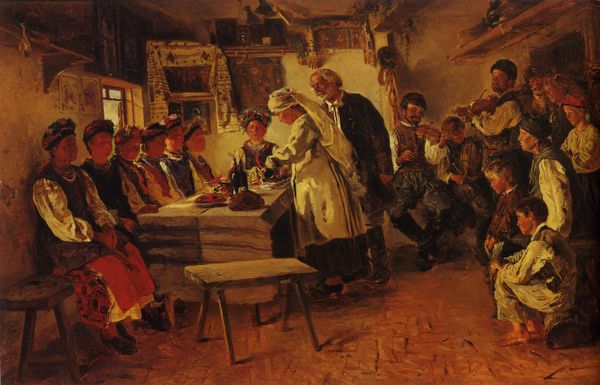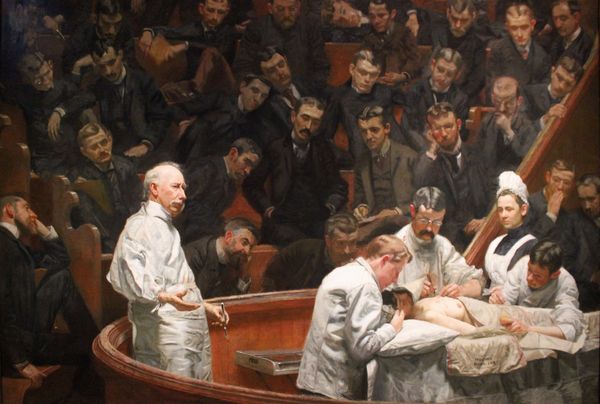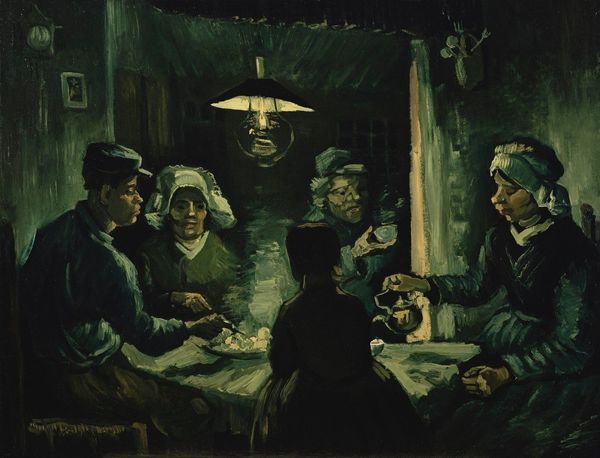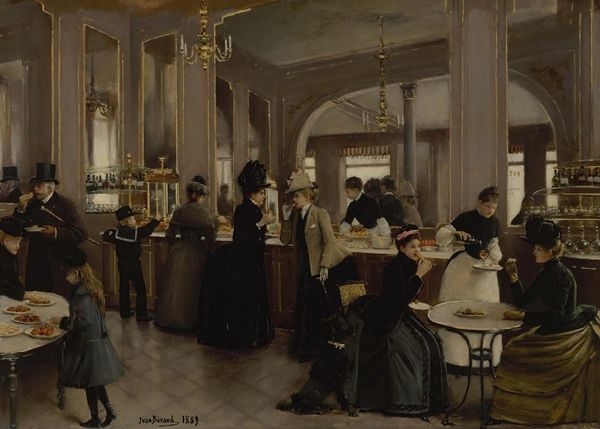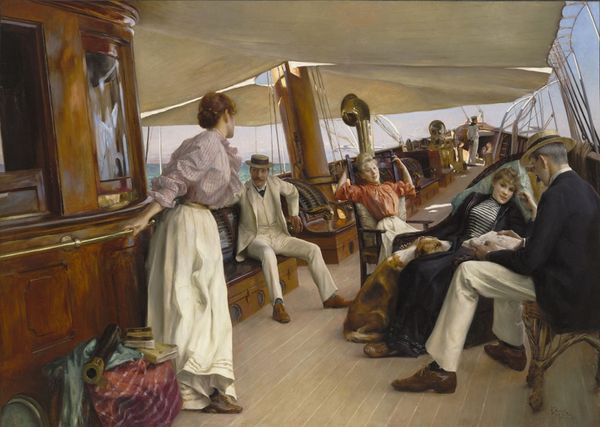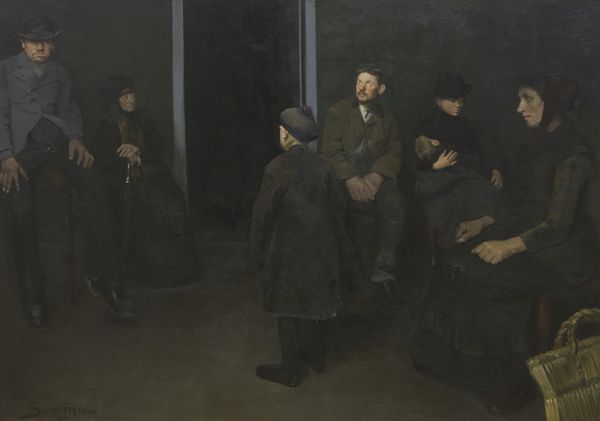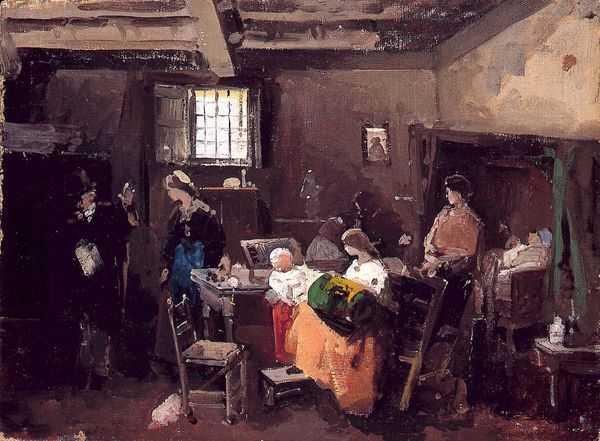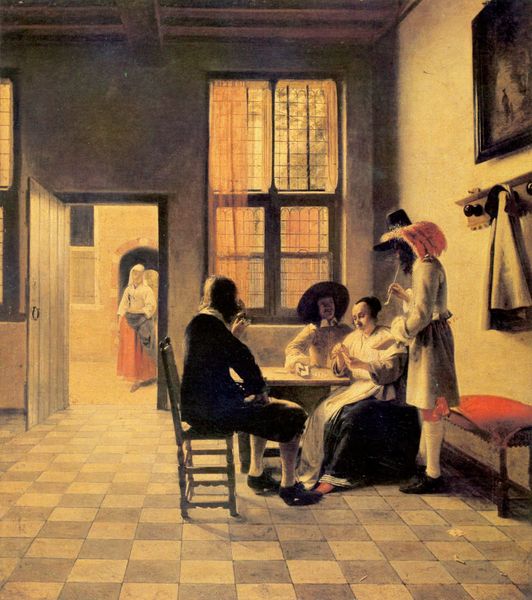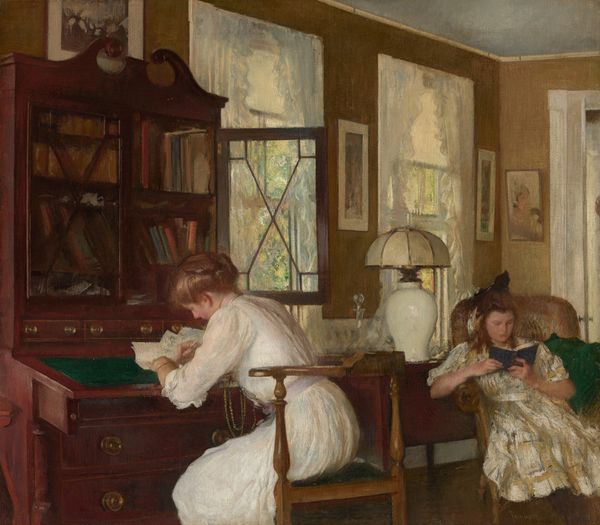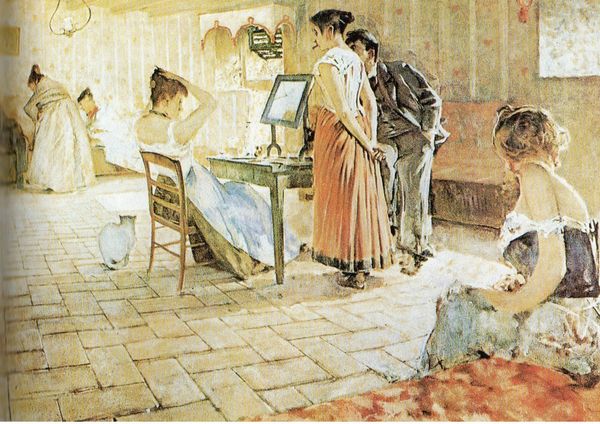
oil-paint, textile
#
impressionism
#
oil-paint
#
landscape
#
textile
#
oil painting
#
cityscape
#
genre-painting
#
modernism
Dimensions: 73 x 92 cm
Copyright: Public domain
Curator: Sobering. I'm struck by the stifled atmosphere of this indoor space. Editor: That's "A Cotton Office in New Orleans" by Edgar Degas, completed in 1873. What you're picking up on reflects significant economic and familial realities. Curator: Tell me more. Is it about the painting’s commentary on social relations within this industry? Editor: Exactly. Degas painted his maternal uncle, Michel Musson, who was in the cotton business. This work provides an intimate, almost unsettling view into the world of cotton brokerage right after the Civil War in the US. Notice the figures—their individual relationships mirror post-war social order and attitudes towards formerly enslaved labor. Curator: You're right. The pallid cotton mound on the table acts like an oppressive weight, drawing my attention. The figures are rendered with precise tonal control but do not breathe individuality; are they specimens? Editor: The loose handling of the painting gives the texture depth that makes it so evocative, don't you think? Notice how the window’s geometry balances the chaos, offering the eye an exit point and softening the rigid grid. Curator: Yes, that contrast emphasizes the modernity of the painting, a feature Degas explored thoroughly. But beyond this, this work also documents the financial ruin Degas' relatives faced in the cotton trade, giving it considerable biographical significance within Degas’ broader oeuvre. It reminds the observer that the effects of macroeconomics have profound personal consequences. Editor: Well, on a more material note, I find it particularly fascinating that Degas himself actually sent a sample of the New Orleans cotton to potential buyers for the painting back in France. That makes it interesting for us to revisit and reevaluate the layers of social and commercial messaging presented in the canvas. Curator: I think the painting stands as a potent commentary on capital, familial collapse, and Reconstruction economics in post-Civil War America, revealing a darker, intimate side to American industrial narratives. Editor: And the close attention to the color and textural rendering contributes equally to that rich complexity and gives an excellent look into how an office atmosphere and daily economic transactions in New Orleans were in the past.
Comments
No comments
Be the first to comment and join the conversation on the ultimate creative platform.

